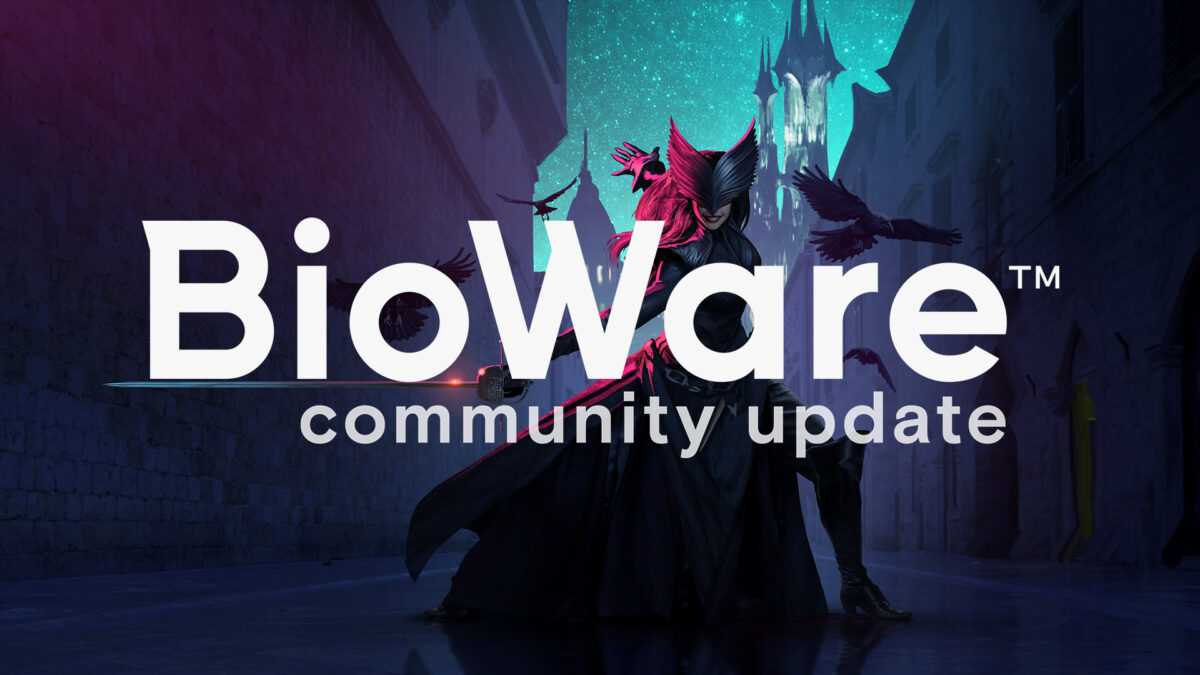Hello, everyone! And welcome back to another BioWare™ Community Update. It’s been a little while since we last spoke, but our work continues—as does the storytelling.
So far, years of effort have gone into our next game, Dragon Age: Dreadwolf™, with hundreds of people working to bring this shared vision to life. We’ve been quietly building it behind the scenes for a while now, so we wanted to give you a look at some stuff we’ve been working on! But let’s start with a little recap for those who might be new around here.
Dragon Age is a series that puts you in the heart of a magical world, but what happens while you’re there—who lives and dies, who rises and falls, who loves and loses—that’s up to you. There are no right choices… only those you make.
At the heart of every one of our games are our stories and characters. Each tale is told by the people who live in them—companions who fight at your side and foes who challenge your every move. This is core to the experiences we craft and is what we believe makes a “BioWare RPG” what it is.
Each character has their own motivations and goals that influence how the story plays out, but so do you. The Hero of Ferelden. The Champion of Kirkwall. The Herald of Andraste. Each of them marked their legacy in the annals of history, but time marches forward and the age of these heroes cannot last forever. As a friend of ours once said, “it’s time for a new hero.”
Making a game that carries forth the stories that came before it while still being a starting point for someone brand-new can be tough—deep lore can seem daunting to new players—but it’s also an exciting challenge! The development process is iterative and dynamic. Ideas get concepted, tested, thrown out, brought back, and changed constantly during early stages, all in the pursuit of getting things just right. And it’s very collaborative, too! Everyone helps each other to build something we hope will excite you.
So, let’s talk about that.
As we said, storytelling is at the core of what we do. Our writers helm the creation of your narrative experiences and work as part of a talented team with editors, producers, and quality verifiers to build out the story, characters, dialogue, and more. And that’s not even getting into the other teams who work so closely with them to bring these tales to life!
But what does working on the writing and editing teams entail? And how are we going about writing for Dreadwolf? It’s not like writing a book where everyone has the same experience on the page. Each player interacts with the team’s work differently based on the choices they make, how much of the game they interact with, and the kind of character they want to play. Here’s how our team is thinking about that, but first…
Please enjoy this sneak peek at writing for Dreadwolf, directly from the game’s codex!
(Codex assets are not representative of in-game format.)
![Misconceptions about the Necropolis
No one has more respect for Brother Genitivi's scholarship than I, but his writing on Nevarra details very little of the practices of the Grand Necropolis. The more I travel, the more I'm convinced these elisions have led to unfortunate conclusions by people of less than generous imagination.
For example: we do not "lock up" our dead to pound fruitlessly against their coffins in the dark. Our departed lie in peaceful state, or even wander! The undead tableaux are loving constructions, not "dress-up with corpses." And in the event a malign spirit causes a disturbance, we don't simply "throw them in a tomb and toss the key"!
Sometimes I think [REDACTED] crafts these questions to tease me.
—From [REDACTED]'s diary](https://blog.bioware.com/wp-content/uploads/2022/09/Codex-Asset.jpg)
Hey! Care to do us the honor of introducing yourselves and telling our community a little bit about what you do?
Ryan Cormier: Hello! I’m one of three narrative editors on Dragon Age: Dreadwolf. Our job is to ensure BioWare’s stories are told with clarity, consistency, and accuracy. That might mean correcting comma splices in a codex entry, deciding if a hero’s dramatic speech carries on one line too long, reviewing plot points, or helping a writer choose which scene to tweak without impacting the overall arc. Somewhere in between, we’re spell-checking some ridiculously long elven word or standardizing a character’s voice. Sylvia Feketekuty: Hi, I’m a senior writer on Dreadwolf. I wrote of one of the codex entries here, “Misconceptions about the Necropolis” (as well as the character who “penned” the entry). These codices are just a tiny snippet of the game, but we wanted to share them as a springboard for talking about our writing and editing process. Sometimes, when I tell people I write for games, they politely try to figure out how to ask, "But writing dialogue doesn’t take up your entire day every day, does it?" Truthfully, no. I'm responsible for coming up with plots, characters, and dialogue, but also for designing missions with our level designers. I work with them on pacing, information flow, and addressing many, many revisions as feedback comes in. We're also responsible for a lot of non-voiced text: codex entries, notes in the world, item descriptions, weapon names, etc. A huge part of my job is just explaining the narrative needs of my characters and missions to other departments and coordinating it all with them.
It sounds like you two do more than the average person might expect an editor or writer to do. How do you two work together, then?
Sylvia: Way early on during the concepting stages, the editing team gives their feedback with the rest of the narrative team on high-level stuff like the new characters, plot, and themes. Once first-draft writing for a character or major mission is complete, we also have editors give us their formal feedback during our big peer reviews. Ryan: At this stage, as we near preproduction, editors talk with writers about big-picture topics like characters, lore, and themes. These elements need the most time. Editing starts broadly and becomes detailed later in the process because it doesn’t help a writer to hear, “This is a run-on sentence,” when we’re still five drafts away from final. We save line edits for last. Until then, editors try to hold their tongues on grammar and punctuation. Sylvia: After the peer review, when revisions are done and we’re in a position to start recording voiced dialogue, I work more closely with the editing team. Editors will suggest better ways to make one sentence flow into the next, spot inconsistencies, and point out when I’ve written something nonsensical. Every editor also “owns” certain character voices, just like writers do, and I’ll often go to them to hash out something for a particular character or to get a second opinion. Ryan: Here, in the final drafts, no edit is too picky. This is where editors tweak the writing with changes to grammar, punctuation, and flow and where the passive voice dies a swift death. We read lines aloud at our desks while examining lore, tone, voice, and other details that change how a line reads in the recording booth or appears in the subtitles. Voice-recording notes and plot summaries are finalized, too. All this fine-tuning involves close work between a writer and editor while we pass edits back and forth, fix this, change that, change it back, debate, agree, and finally send it off for recording and translation.
So from the very beginning to the very end, our editors and writers are in lockstep with each other. What about the rest of the devs and other teams?
Ryan: Editors are the bridge between the writers and out-of-studio partners like actors and localizers. Once final drafts are complete, our game dialogue is sent to our in-house performance team, voice actors, and translators, all working in numerous languages. Editors work with those teams daily and are the troubleshooters when technical or cultural concerns arise. Sometimes, an English joke just doesn’t land in the localized copy, or maybe we learn that a name we chose for an idyllic village in Thedas has an inappropriate meaning in another language. Sylvia: One of the best Dragon Age: Inquisition™ translator questions I ever saw was from a German translator who wanted to know what one character meant when he talked about “dancers with tassels.” I mentioned this above, but most of my cross-team work is keeping up communication. Does the audio team have all the context they need? Does Character Art know a plot point requires an alternate character outfit? People often compare narrative games to movies, but a lot of them are nothing like movies, structurally speaking. RPGs the size of ours are more like a full season of a bizarrely nonlinear television series with so many mutable, moving parts.
That definitely paints quite the picture. You mentioned your work on DA:I just then, too. What about on Dreadwolf? What’s it like writing for the next game?
Sylvia: It’s been eight years since our last DA game came out. I’ve seen a lot of adults fondly reminiscing about how they played it as teens! Dragon Age: Dreadwolf has been a balance of providing answers to long-standing questions for veteran fans while making a game that new players, or someone who only played DA:I years ago, can also get into. Ryan: Unlike the vast galaxies we explore in our other franchises, Dragon Age: Dreadwolf returns us to Thedas, where we can revisit friends and places that are familiar. Some fans haven’t spent time with Dragon Age since the 2014 release of Inquisition, while others have read every comic and story published since. Others never played a Dragon Age game at all and have no idea who the bald guy is (he’s Solas). It’s a varied audience, and development for Dreadwolf has included conversations about how the team can simultaneously reward our returning fans and welcome new ones. Sylvia: There are other things, of course, but we can’t really get into that until the game comes out.
Well, we’ll see what the future holds, then. If you were speaking to a fan, new or old, what would you tell them makes a Dragon Age game unique?
Sylvia: To me, BioWare has always carried the old-school D&D legacy in its veins. I try to inject some of what I love about tabletop roleplaying into my work: bizarre encounters, prideful villains, adventurers thrust together, arcs with big stakes that retain a sense of playfulness or adventure. It’s everything I’ve liked in the best fantasy tabletop games I’ve played in. Ryan: For me, it's the characters. A Dragon Age story is full of heroes you want to visit a Kirkwall tavern with, or at a stylish Antivan party; travelling with friends whose witty banter makes the time fly by. The greatest compliment fans give our characters is the years of art, cosplay, and fan fiction that Dragon Age has inspired. That’s a sincere connection between our audience and our creations. And a villain who makes people want to spit on the ground at the mention of their name? Even better.
Though we can’t yet show our community our characters acting in-game, dialogue isn’t our only option. What about these codex entries? Is that something you could talk about?
Ryan: Yes! Codex entries are valuable because they provide information that might otherwise disrupt the flow of the game. For example, players might want details about the Grand Necropolis in Nevarra, but characters shouldn’t sound like tour guides. Before any writing, the narrative team discusses which entries are required and which aren’t. It’s crucial to properly time codex unlocks with player progression. No one wants a dozen entries only ten minutes into the game, but interested players shouldn’t have to wait long to learn more about the people, places, and concepts introduced. Does a codex unlock when something’s first mentioned? When a related character appears? Is the entry only required if they actually interact with said thing? Sylvia: Making all our codex entries “in-world” (letters, books, notes, etc.) gives us ways to play with information. I chose the “Misconceptions about the Necropolis” codex to show everyone because it was really fun to write. I wanted the in-game author to be frustrated with Brother Genitivi’s portrayal of the Necropolis while also trying to deny the depth of his irritation with said world-famous scholar. It’s a diary, yet we see the author still feels obligated to exercise a measure of decorum in his private writing. And the micro-revelation at the end is that it’s someone he knows in real life, not far-off Genitivi, who is needling the poor guy about Nevarra’s death rituals. It’s fun to layer things like this, and players are savvy about those layers. They pick up (and I think appreciate) the character coming through. It’s also a collaborative creative process. My Necropolis codex entry, like many others, was edited by Cameron Harris, another of our editors. In this case, Cameron caught that I had set file information incorrectly and also adjusted the overall stylization for consistency
Here are a couple more codex entries for you. Let us know what you think of them!
![[REDACTED] Talks: Dragon—Vinsomer
Appearance: Dark back and light underbelly. She's hard to see when underwater. Like those whales.
Diet: Squid or those big worms that burrow near the shore. Uses her lightning to stun prey. Jaws are more like a beak. Good to grip squishy stuff or crack shells. I think the lightning also helps her see down in the deep water. She does little crackles before she strikes.
Behavior: She's hunting more than she needs. She's also not attacking [REDACTED] unless they get close to her lair. Then she kills them fast. I think she has dragonlings. Must be trying to keep them fed and not look for fights. Only reason a dragon stays that quiet is to protect her kids.”](https://blog.bioware.com/wp-content/uploads/2022/09/Codex-Asset-2-1.jpg)

Vinsomer entry written by Patrick Weekes | Dowager entry written by Lukas Kristjanson
Both edited by Ryan Cormier
We hope you enjoyed this first discussion about how our writing and editing teams are thinking about Dreadwolf! Every step of the way, we’re working together as a team, even in ways you might not imagine. From integrating written materials into the engine itself to our devs doing placeholder dialogue for characters, it’s a process that evolves over time.
But your efforts never stop, either! Naturally, when Solas shows up, so do many of you, and with incredible creations, no less. So in honor of the Dread Wolf himself, we wanted to showcase some amazing pieces we’ve seen.
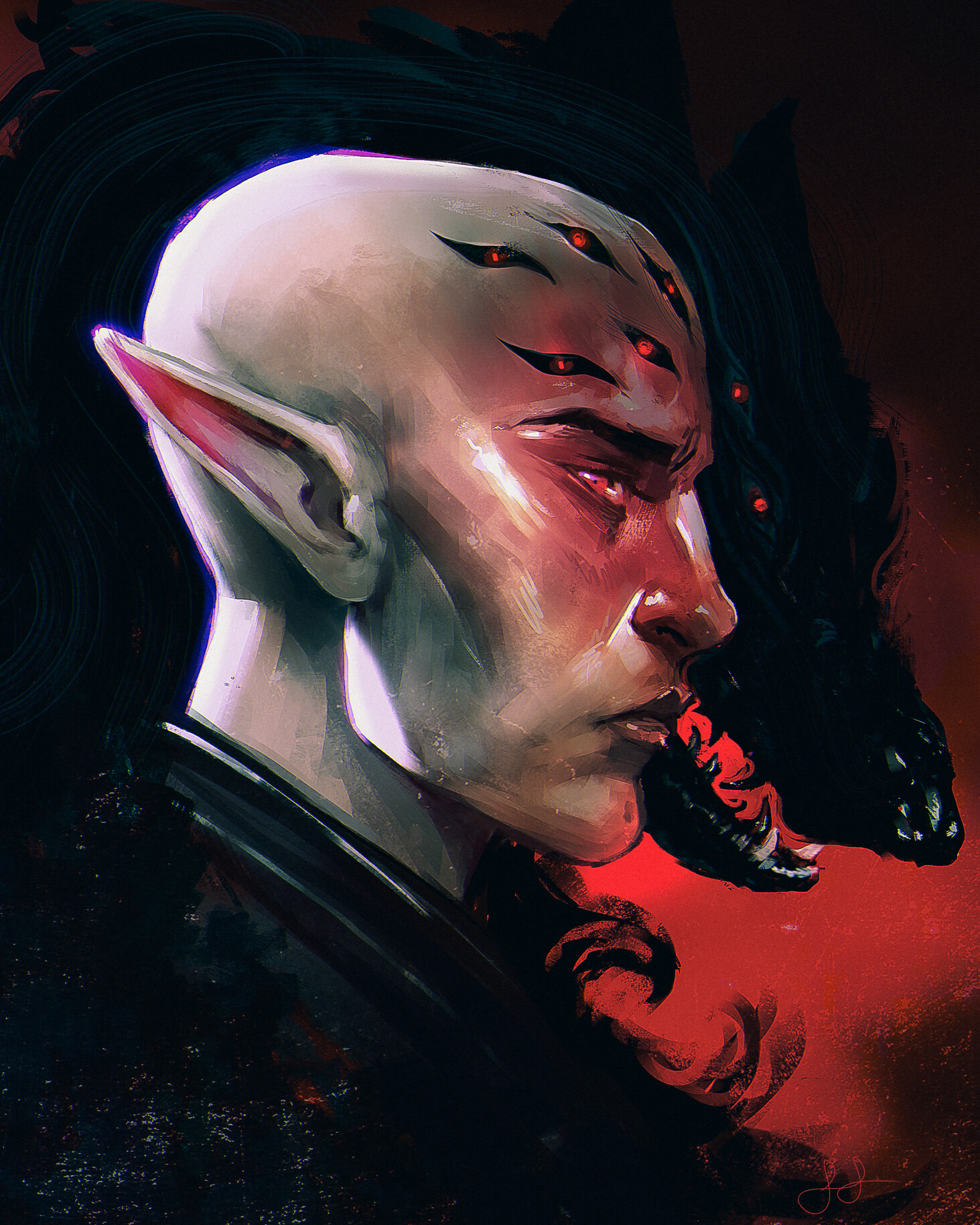

“Lost Elf” by hexcats | “Lingering Looks” by Mogwaei
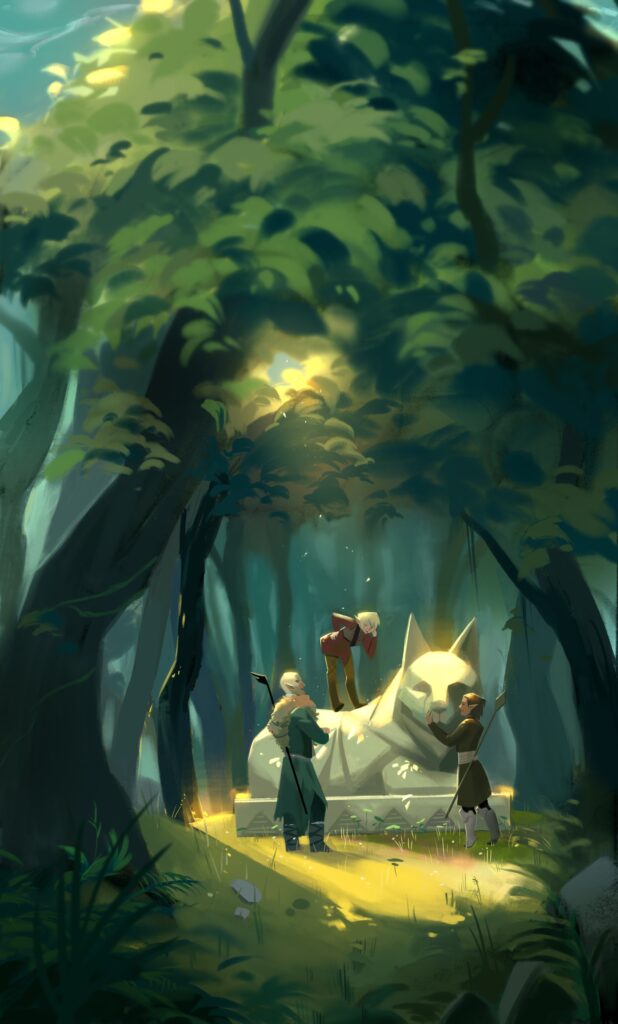
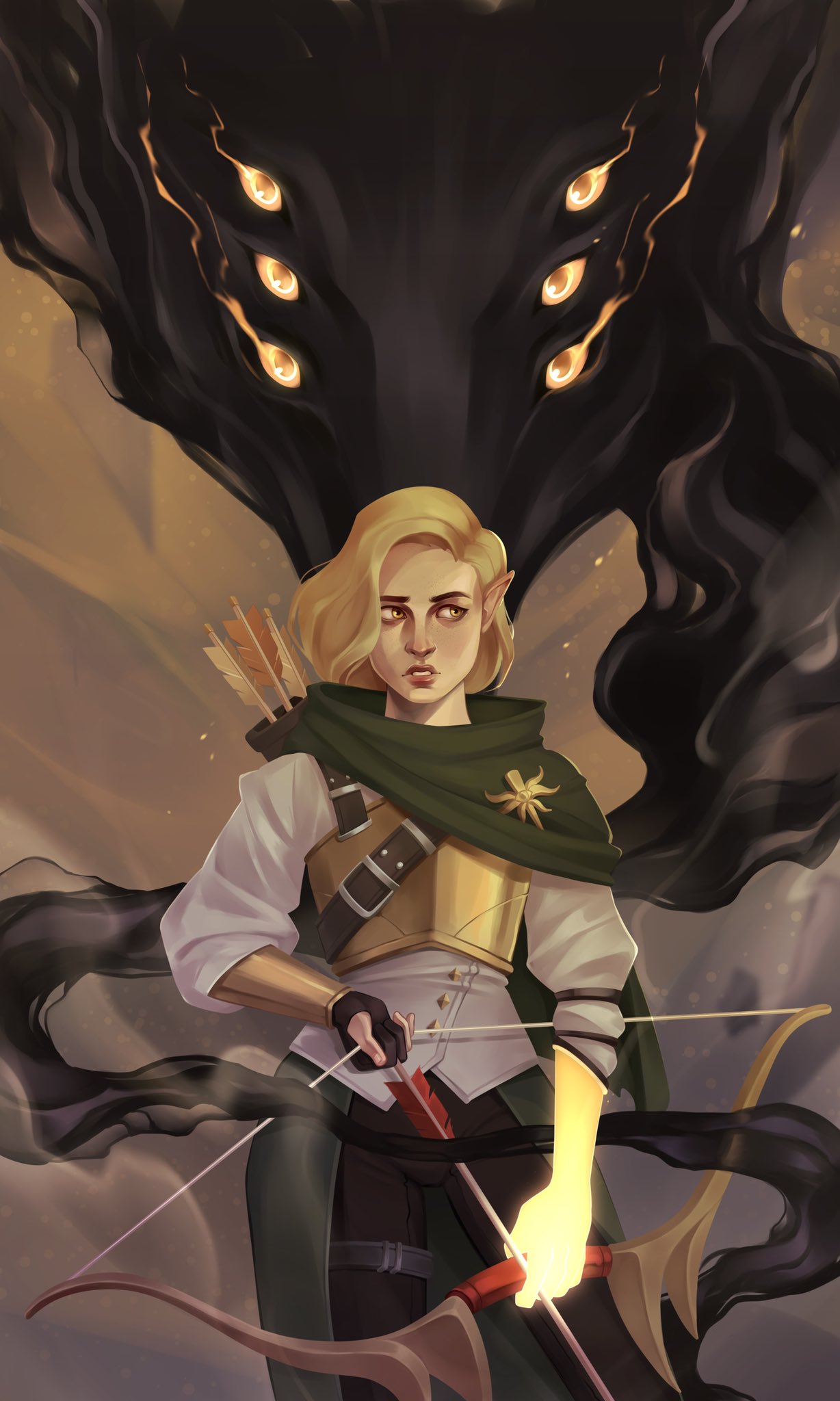
“Emerald Graves” by I-Aria | “Fen’Harel Ma Ghilana” by Oatmeal bar
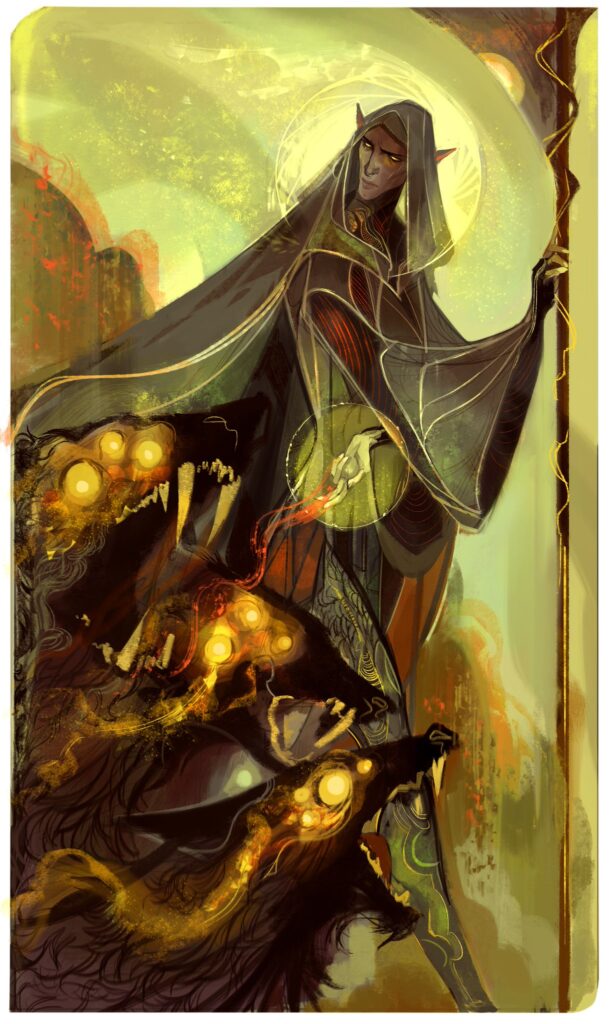
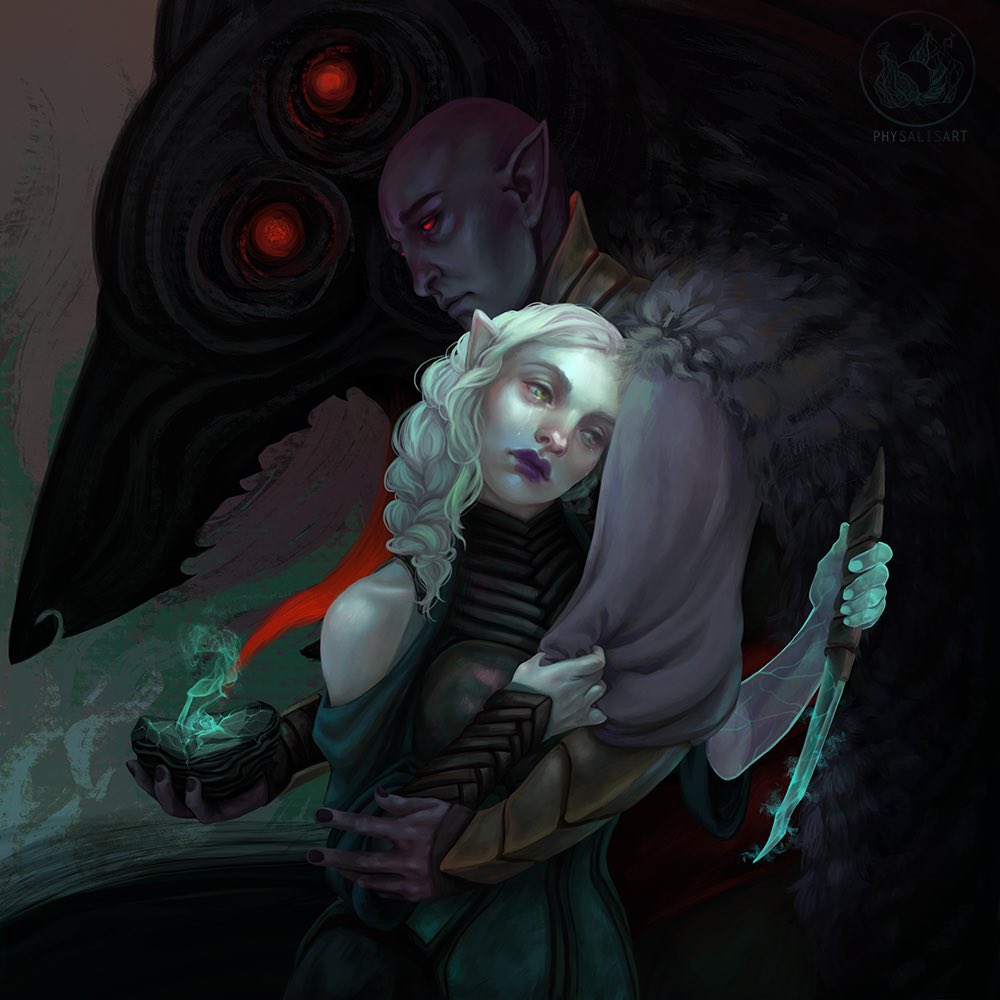
“The Impostor” by kallielef (Kallie LeFave) | “Ma Lasa Banal’Ghilana” by Stefanie Curth
Oh, and we absolutely could not leave out Handsome Solas.

“Handsome Solas by “ LofiWitchHop
Every day, the game gets one step closer to our next big development milestone—and one step closer to where it’s going to be when you play it. But these changes don’t just happen. They’re being worked on by the teams of people shaping this next adventure for you—carrying the vision together on our road to launch.
We want to keep showing you what we’re up to, so let us know if you like what you’re seeing! We have some fun stuff planned, so be sure to keep an eye out for our upcoming BCUs, one of which will include a look at what our designers are working on!
Until next then, may the Dread Wolf take you.
—The BioWare Team
